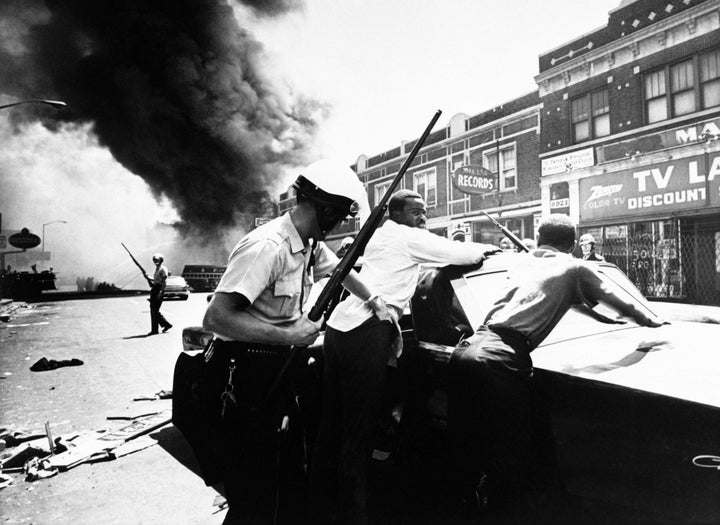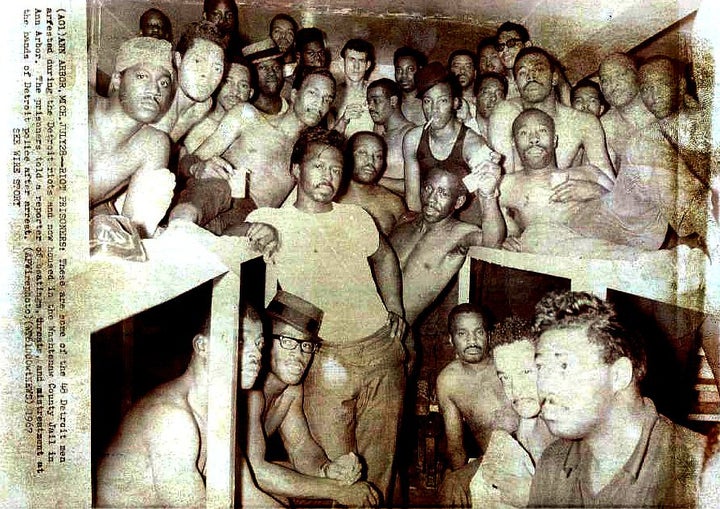Urban discontent persists in Post-Obama era. New movie opening in July profiles intense civic rebellion.

Fifty years ago this week the urban heartland of America exploded into bloody bedlam because of a blind pig.
A blind pig is a speakeasy — a euphemism describing an unlicensed place to party or buy liquor. So, when the Detroit police determined to raid a particular blind pig in a poor black neighborhood on a way too hot Sunday night on July 23, 1967, they ignited a black uprising.
The raid also meaningfully changed the respect blacks gave to law enforcement locally in Detroit, altering perceptions around citizenship and fealty to civil society.
It had repercussions for President Lyndon Baines Johnson, too.
Gearing up for re-election, the Detroit rioting pressured Johnson to create the Kerner Commission, the first federal panel devised to study black discontent in urban communities. Creating the panel signaled a defeat for Johnson, whose Great Society programs were expressly aimed at addressing urban needs.
Johnson flamed in anger toward the black outrage being witnessed in Detroit:
The apostles of violence, with their ugly drumbeat of hatred, must know that they are now heading for disaster. And every man who really wants progress or justice or equality must stand against them and their miserable virus of hate.
In the end, 43 Detroiters were dead, 10 white, 33 black, the youngest, Tanya Blanding, a 4-year girl. Vast areas of the city’s black community burned. Over one thousand civilians were injured, causing Gov. George Romney to declare a state of emergency.

Apocryphal narratives about what occurred at the blind pig have been elevated into urban legend status — ranging from the genocidal intentions of the federal government to claims that blacks were thrown into public sewers by the police, never to be found again.
A standard version of events can be found in the book “Intersection: What Detroit has Gained, and Lost, 50 Years After the Uprisings on 1967.”
The meticulous volume depicts what is officially reported to have occurred: On an early Sunday morning, around 3:30 a.m., police raided the blind pig on 12th Street (now called Rosa Parks Boulevard) where returning Vietnam veterans were being celebrated. More than 80 people were packed into the upstairs venue when an undermanned retinue of police officers broke into the illegal establishment. The raid caused the black patrons to panic and then respond with violence.
The confrontation between the police that ensued let to arrests that attracted neighborhood crowds. Angry protest continued to daybreak, beginning a week-long clashing. The events are also given a fresh perspective in the recently released movie, “Detroit,” directed by Kathryn Bigelow and starring John Boyega, Anthony Mackie, Algee Smith and Jacob Latimore.
While civilian looting and police gunfire were the most visible aspect of the riots, the confrontation had its roots in complaints about long-standing systemic racism reflected in unfair employment opportunities, poor schools, and residential segregation.
The conflict in Detroit decades ago eventually led to the dramatic downward spiral that since has marked the character of the city, even a half century later.
The uprising accelerated white flight throughout the 1970s.
A crack and gang industry engulfed the city in the 1980s and 90s. Up to 60,000 homes were abandoned, depleting its tax base. Motown became the murder and crime capital of the country.
Only a decade ago did the city emerge from bankruptcy that led to massive city worker layoffs.
The Kerner Report findings were ugly: Detroit, the panel concluded, was an extremely racist city, segregated and at odds with the meaning of democracy and racial equity. The report added that the nearly 1,200 other riots in urban communities across the country that year similarly reflected profound “white racism.”
What lessons can be gleaned from our nation’s episodic racial uprisings that have extended from the past slave plantation to North Philly, from Boston to Baltimore today?
Any honest response reminds us duly that our day of racial reckoning remains distant, maybe tomorrow.
